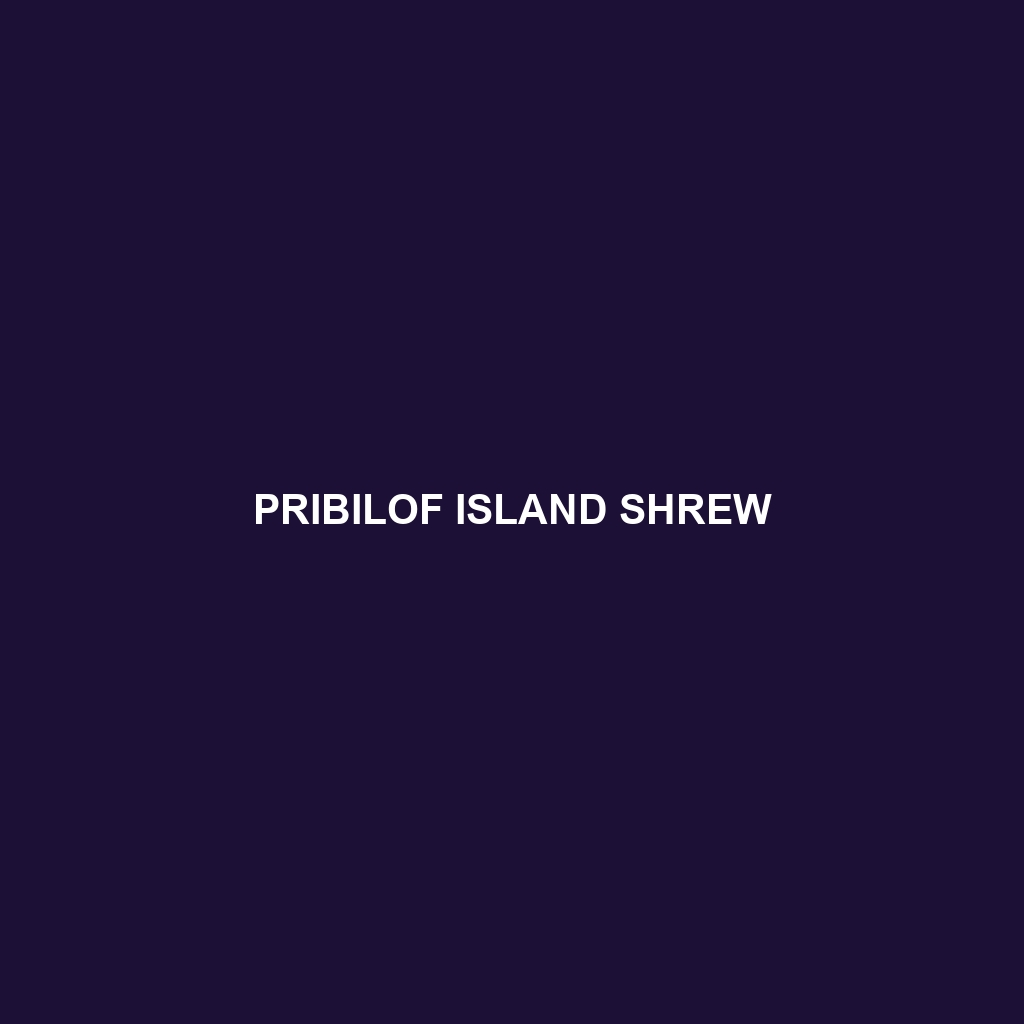Common Name: Pribilof Island Shrew
Scientific Name: Sorex pribilofensis
Habitat:
The Pribilof Island Shrew is primarily found on the remote Pribilof Islands located in the Bering Sea, part of Alaska, USA. This small mammal inhabits diverse environments, including tundra and grasslands, as well as forested areas. The unique ecological conditions of these islands, characterized by a maritime climate and rugged terrain, create an ideal habitat for this elusive species.
Physical Characteristics:
The Pribilof Island Shrew is a small mammal, typically measuring around 9 to 12 centimeters in length, including its tail. Its fur is soft and dense, ranging from brown to greyish hues which serve as perfect camouflage against the island’s natural surroundings. Notable features include a pointed snout, tiny eyes, and a long, slender body, distinguishing it from other shrews. Its size and coloration make it well-adapted to its habitat, allowing the Pribilof Island Shrew to thrive in its environment.
Behavior:
This species is primarily nocturnal, engaging in foraging activities during the night. Pribilof Island Shrews are known for their high metabolic rates, which necessitate constant foraging for food. They exhibit a range of behaviors to navigate their environment, including burrowing and creating intricate tunnel systems in the soil. Their agility and quick reflexes help them evade predators, making them fascinating subjects for ecological studies.
Diet:
The diet of the Pribilof Island Shrew consists mainly of insects, earthworms, and other invertebrates. They are known to consume a variety of small invertebrates available in their habitat, which plays a significant role in maintaining the ecosystem’s balance. Their feeding habits contribute to controlling pest populations, marking them as an integral part of their ecological niche.
Reproduction:
Pribilof Island Shrews generally breed between late spring and early summer. The gestation period lasts approximately 20 to 25 days, after which females give birth to litters ranging from two to six young. Offspring are weaned after about three weeks and quickly become independent, showcasing rapid growth and development. These shrews are known for their strong maternal care during the early stages of life.
Conservation Status:
The Pribilof Island Shrew is currently listed as vulnerable due to its restricted range and specific habitat requirements. Threats such as climate change, habitat loss, and predation from introduced species pose risks to its survival. Conservation efforts are essential to ensure the future of this unique species.
Interesting Facts:
One fascinating aspect of the Pribilof Island Shrew is its ability to thrive in harsh conditions, showcasing remarkable adaptations to its environment. It is one of the few shrew species that are endemic to a specific geographical location, making it a subject of interest for researchers studying island biogeography and conservation biology.
Role in Ecosystem:
The Pribilof Island Shrew plays a crucial role in its ecosystem as both a predator and prey. By feeding on various invertebrates, it helps control populations of insects and contributes to soil aeration through its burrowing activities. As a prey species, it serves as a food source for larger mammals and birds, facilitating energy transfer within the food web of the Pribilof Islands.
